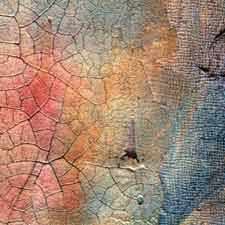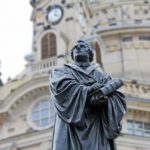We run our website the way we wished the whole internet worked: we provide high quality original content with no ads. We are funded solely by your direct support. Please consider supporting this project.
How NOT to be Christ-Centered: A Review of God With Us – Part II
In Part I of my review of Scott Oliphint’s God With Us we saw that Oliphint is attempting to reframe divine accommodation in a Christ-centerd way. Yet, while he affirms that “Christ is the quintessential revelation of God,” he went on to espouse a classical view of God that was anchored in God’s “aseity,” not Christ. What then does Oliphint mean when he says he wants to construct a Christ-centered understanding of accommodation?
Once he fleshes out his classical understanding of God, we discover that what Oliphint means when he says his approach will be Christ-centered is that he wants to use the “hypostatic union” (referring to the union of God and humanity in Christ) that was articulated at the Council of Chalcedon (454AD) as the paradigm for understanding divine accommodation (see esp. 139-56). In this light, I think it’s fair to describe Oliphint’s project as being not so much centered on Christ as it is centered on the Council of Chalcedon – indeed, centered on a particular interpretation of Chalcedon, as we’ll see below. As Oliphint interprets it, the “hypostatic union” worked out in this council involved God – the immutable and impassible God he has just fleshed out – becoming a full human without thereby surrendering any of his essential divine attributes. “God did not (indeed, could not) give up any essential aspect of his deity in order to assume human nature,” he avers (151).
One of the strategies Oliphint employs to render this hypostatic union coherent is a “reduplicative strategy” that involves a type of reasoning that proceeds along the lines of “X as A is N” (151-54). As a full human, Jesus possessed all the attributes of a human, while as God, Jesus possessed all the attributes of God. As a full human, for example, Jesus was ignorant of certain things, while as God Jesus was omniscient ( 154). Consequently, he later notes, “what we have in the person of Christ is a mysterious unity, a unity in which there can be real ignorance together with exhaustive knowledge” (178). So too, as a full human, Jesus was limited in space, while as God, Jesus was omnipresent. All of this is simply a way of articulating the Chalcedonian Creed that in Christ, “we have the perfect union of God and creation in the uniting of the two natures in one person.” Hence, Oliphint concludes, “if we want to know how God can relate to his creation, we should look to the example of that relationship in the person of Christ” (156).
In Part III of this review we’ll see that Oliphent is going to use the Chalcedonian creed as the framework for understanding all of God’s accommodations in Scripture, and it produces some very interesting results – and problems!
Category: Essays
Tags: Book Reviews, Classical Theism, Cruciform Theology, Essay, God With Us
Topics: Biblical Interpretation
Related Reading

Five Brief Philosophical Arguments for the Open View
Introduction I believe that sound philosophical arguments support the open view in which God doesn’t foreknow the future free decisions of humans. My main reasons for holding this view are biblical and theological, but since truth is one we should expect that the truths of Scripture and the truths of reason will arrive at the…

The Cross in the Mirror
For those who are just tuning in, we are in the midst of a series that is fleshing out the theology of The ReKnew Manifesto. So far I’ve argued that the cross is the definitive revelation of God and that it should therefore be the centerpiece of our hermeneutic (interpretation of the Bible) as well…

When Jesus Referred to Canaanites as “Dogs”
Last week I discussed Paul’s harsh language regarding his opponents, the worst example being his reference to certain opponents as “dogs” (Phil 3:2). I suggested that such language simply reflects the fact that Paul wasn’t perfect, as he himself admitted. Several people pushed back on this suggestion by pointing out that Jesus once referred to…

The Reformers and the Centrality of Christ
The Christocentric nature of the Church’s hermeneutic approached a zenith in the Protestant Reformation. While Luther and Calvin rejected allegorical interpretation, in theory if not in practice, they nevertheless relied on typology and other creative hermeneutical strategies to discern how Christ was the subject matter of the OT. For Luther, Jesus was “the Word” in…

Part 7 (of 15): Hierarchies, Masculinity, and Femininity
Assessing Jordan Peterson’s 12 Rules for Life by Greg Boyd “Do male crustaceans oppress female crustaceans? Should their hierarchies be upended?” In the previous two posts we reviewed Peterson’s conception of life as a delicate balancing act between order and chaos (post 5) and we’ve explored how he applies this conception to biological and cultural…

Who Rules Governments? God or Satan? Part 1
Running throughout Scripture is the motif that depicts God as the ultimate ruler of the nations. On the other hand, the NT teaches that the ruler of nations is Satan. What do we do with these two apparently conflicting motifs? First, because OT authors tended to understand the creation along the lines of a king-centered…

